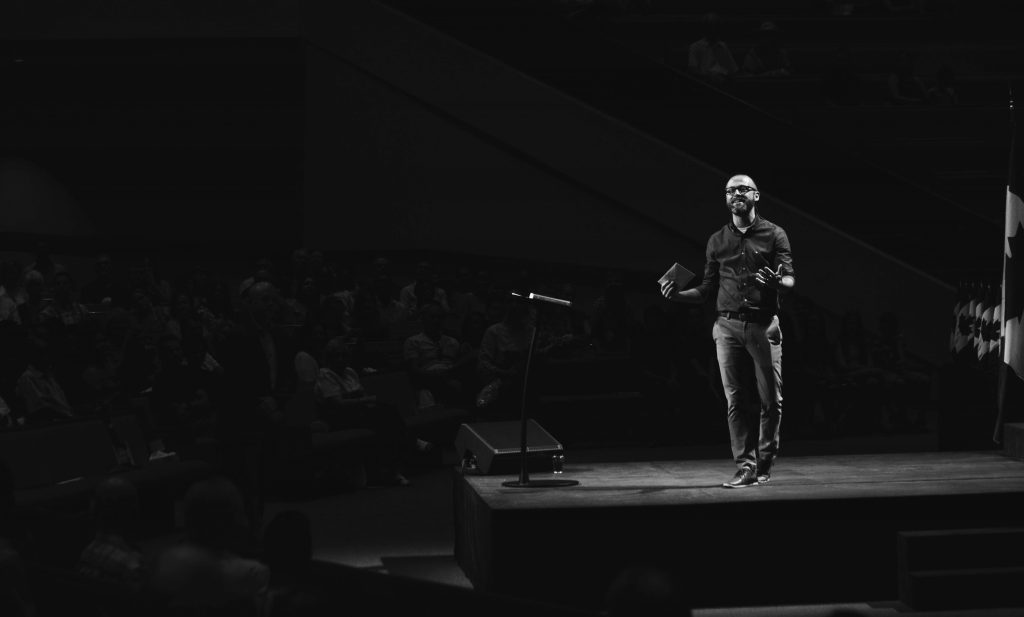I get asked this question quite a bit so thought I would take some time to explore it…
A lot of people struggle when they are preparing a talk as they want to prepare it in the exact way they will deliver it and still sound natural and authentic. They get very caught up in remembering what they want to say.
Here’s the thing though – a lot of the time for a really impactful talk, the speaker doesn’t actually have notes. Most of the time we shouldn’t be using notes or we should only have minimal prompts to deliver an impactful talk.
Working with clients I often come up with a lot of opposition to this because one of the biggest fears they have when they’re speaking is they actually forget what they’re going to say.
Is that something you can relate to?
I certainly can, I have felt like this myself.
I have spent many, many years training people. And a lot of the time I had to find ways to deliver that material in a way that was compelling. So it was impactful enough to make sense but also natural. It didn’t sound robotic. If you’ve ever heard someone deliver a speech that sounds like they’ve memorized a script it doesn’t come across in a natural way at all!
The other thing is we can lose energy when we’re doing that as well. Our audience starts to lose focus when they’re listening to you because it’s a different part of the brain that’s used.

When you are remembering something, and you write it down, and read it out you are using a different part of the brain. So, when you say it out loud, again, it sounds different. Because you’re remembering it a different way.
I wanted to find a way that did away with this, because the biggest fear I had when I was really developing my craft in speaking was ‘what happens if I forget what to say next, what happens if I lose my train of thought?’
I know a lot of people have this problem, and there is a way that you can compress your talks so that not only do you deliver them in a way that sounds natural, but also you remember everything you’re saying.
There’s a couple of ways that you can do this.
- Write it down: but not in a detailed way. I highly recommend when you’re learning a speech to just write down key words because if you do that, then you are learning in different parts of your brain.
- Say it out loud: in your natural voice. This means you don’t have to rely on your notes as you have saved the memory of you speaking it in your natural voice. Do this as much as possible. Don’t just keep it all in your head, thinking about it all the time, get it out!
- Big Paper: note your key points. The best way to remember is to do it on a big piece of paper. I grab a piece of flip chart paper and record the core message, the key messages, the stories, and then I add all the key points around the outside. It helps me to visualize the order for the talk. The core message of the talk is the thing I want people to walk away knowing from that talk. And then everything around the outside is the sequence. For each section of the talk, there is a picture and there is a keyword and I know what each represents. So rather than writing it all down word for word, I’m actually remembering the story with a few key points around it. I practise talking about that particular point so it comes out naturally.
This is the exact method that allowed me to deliver a TEDx talk within 48 hours. If I had tried to write down word for word what I wanted to say, and memorize it, it just wouldn’t have worked out at all!

It also really, really helped me in my training days where I had key points that I needed to deliver and I had to be succinct with them as well as link them together and deliver in a really natural way.
I’m all about authenticity showing up as you sharing your stories and this is the best way to do that.
There is nothing that packs more of a punch than just remembering the key points because everything is inside you. Everything you need to say is already there.
And all you need to do is bring it out in a in a way that’s very, very simple that uses images that you can remember that links it together and then you’ll be really authentic and natural when you deliver your talk and you’ll remember exactly what you need to say.
And If you lose your train of thought you know what the next big chunk point is.
Recent Comments